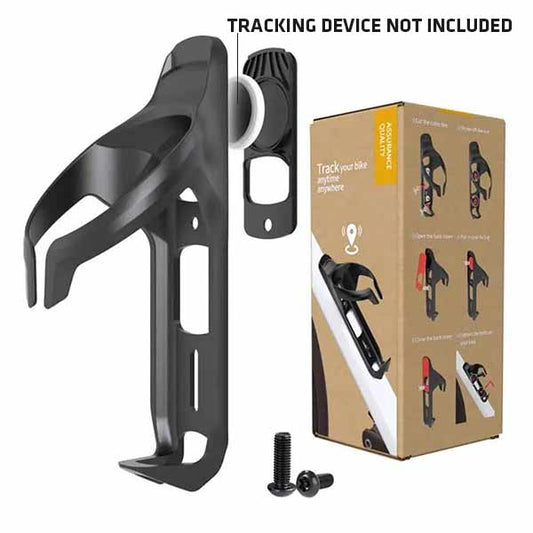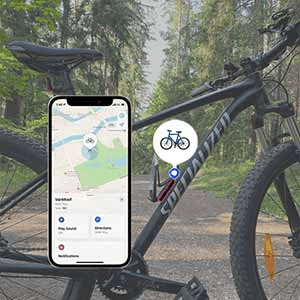Is Your Bike Actually Safe? Security Mistakes Most Riders Make
Bicycle theft continues to rise in urban centers across the country, with an estimated 1.5 million bikes stolen each year. Despite this alarming trend, many cyclists—even experienced ones—continue to make fundamental security mistakes that leave their prized possessions vulnerable.
Proper bike security isn't just about owning a lock; it's about developing consistent habits and understanding how thieves think and operate. Even small oversights in your locking routine can make the difference between finding your bike where you left it or discovering only a lonely front wheel still attached to a rack. As modern theft techniques evolve, so too must our anti-theft strategies, which now include everything from better mechanical locks to innovative tracking solutions like those found among the Best Anti-Theft Gear for Bikers in 2025. In this guide, you'll learn how to identify and correct the most common security mistakes, implement proper locking techniques, choose secure locations, and adopt advanced strategies to protect your bicycle investment.
The most common bike security mistakes riders make
While most cyclists understand the importance of using a lock, many thefts occur not because riders completely neglect security, but because they make small yet significant errors in their approach. These mistakes can render even expensive locks ineffective and leave bikes vulnerable to opportunistic thieves.
Using inadequate locks
Perhaps the most prevalent bike locking mistake is relying on cable locks as primary protection. These thin, flexible locks can be cut in seconds with basic bolt cutters that easily fit into a backpack. According to the National Bike Registry, over 60% of stolen bikes were secured with only a cable lock at the time of theft. For proper security, cyclists should invest in U-locks or heavy-duty chain locks that offer significantly more resistance to cutting tools.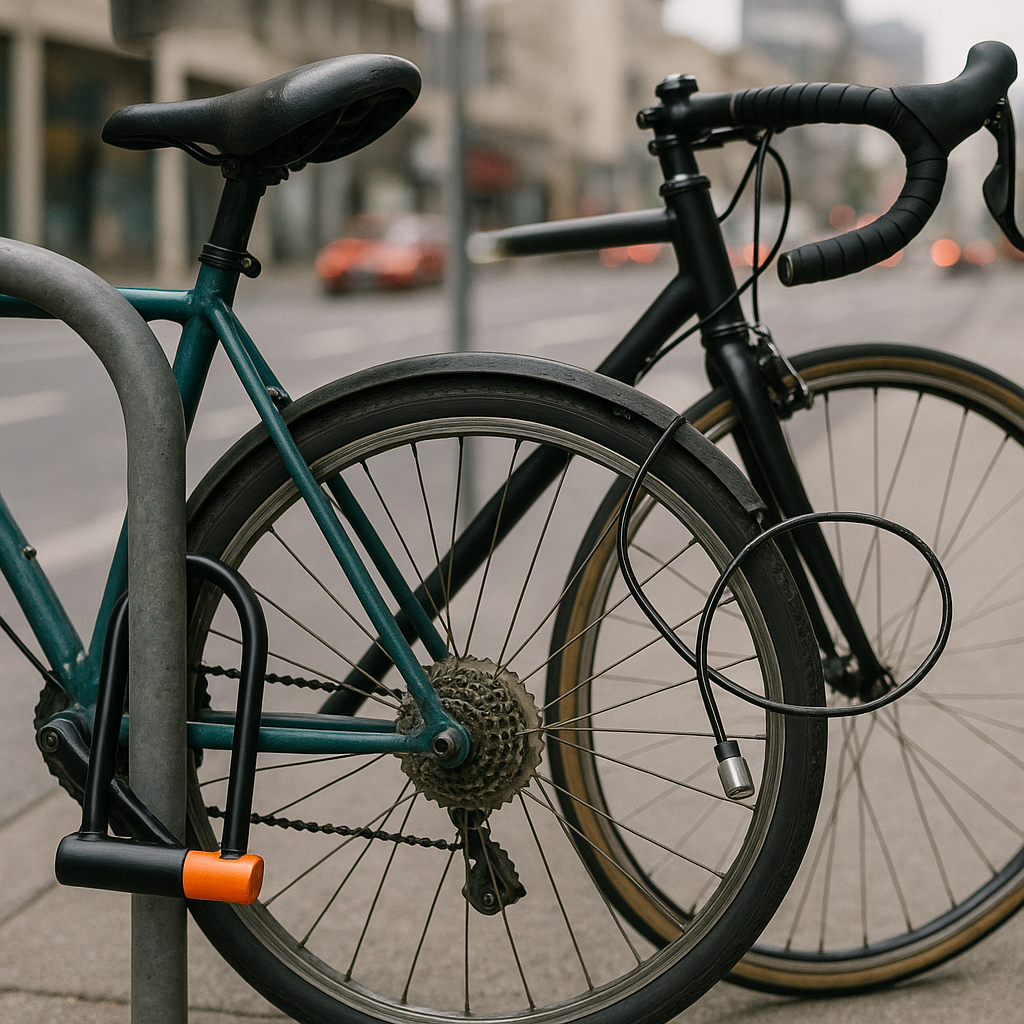
Improper locking technique
Many riders secure only the wheel to a rack or only the frame, leaving half the bike vulnerable. Proper technique requires locking both the frame and at least one wheel to an immovable object. Failure to do so often results in returning to find just a wheel or frame remaining—a costly lesson in lock frame and wheel security.
Choosing poor anchor points
Cyclists frequently lock their bikes to objects that can be easily defeated or removed. Common examples include wooden posts, chain-link fences, trees, or "sucker poles"—sign posts that can be unbolted from the ground or have their signs removed to slide the bike up and over. These bad places to lock a bike practically invite theft.
Selecting vulnerable locations
Leaving bikes in poorly lit or rarely trafficked areas dramatically increases theft risk. Thieves prefer to work without witnesses, making isolated locations prime targets. Security experts from the International Bicycle Fund recommend always choosing high-visibility areas with regular pedestrian traffic.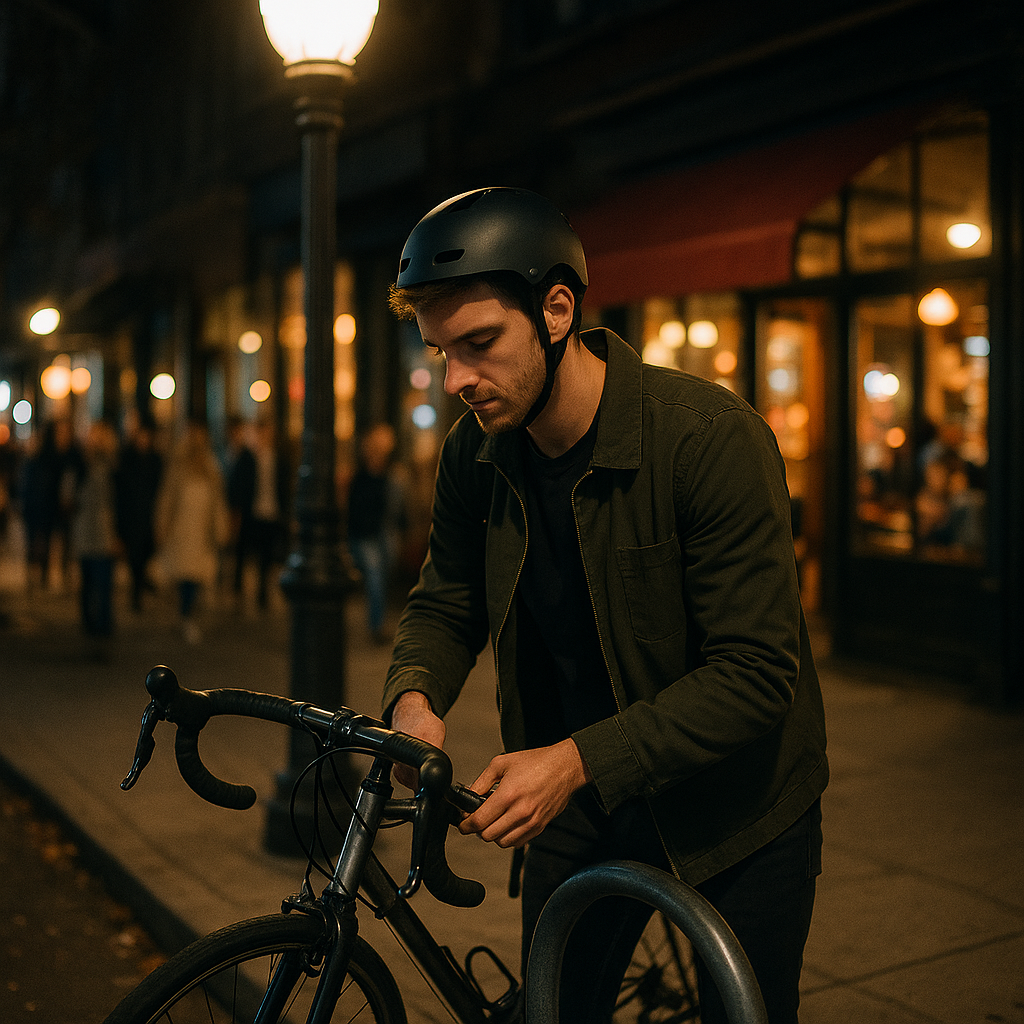
Neglecting removable components
Many cyclists secure their frames but forget about easy-to-grab accessories or components like lights, saddlebags, or quick-release wheels and seats. These items often have significant value and can be removed in seconds without tools.
Real-world examples of bad locking practices
Consider the case of Marc from Portland, who locked his $2,000 mountain bike to what appeared to be a sturdy metal sign post downtown. When he returned two hours later, both his bike and the post were gone—thieves had simply lifted the entire post out of its concrete base, which had deteriorated over time. Similarly, Jen from Chicago secured her commuter bike using a quality U-lock, but only locked her front wheel to the rack. She returned from work to find just the wheel remaining, with the frame and all components stolen after thieves released the quick-release skewer.
These stories highlight how common bicycle theft errors can lead to significant losses. To better protect your investment, consider reviewing more secure locking solutions like those offered by the AirTag Bike Mount Case with secret security screws, which provides an additional layer of security through discreet tracking capabilities.
How to lock your bike properly
Understanding the proper way to lock a bike is essential for effective theft prevention. The right technique combined with quality equipment creates multiple barriers against potential thieves.
Step-by-step locking technique
- position your bike against a solid, immovable object in a well-lit, high-traffic area
- place your primary lock (preferably a U-lock) around the rear wheel, frame, and the secure object
- ensure the lock is as high off the ground as possible while still securing these components
- if using a second lock, secure the front wheel to the frame or directly to the immovable object
- remove all detachable items (lights, computer, panniers)
- ensure your lock's keyhole faces downward to prevent water and debris accumulation
Choosing the right lock type
Different lock types offer varying levels of security and convenience. U-locks provide excellent protection against leverage attacks and moderate protection against cutting tools. Chain locks offer good versatility for securing awkward frames or multiple bikes but add weight. Folding locks balance security and portability with their compact design when not in use. For maximum protection, many urban cyclists employ the double locking method—using two different types of locks to force thieves to carry multiple tool types.
Lock quality and placement—the science of security
Not all locks are created equal. Look for independent security ratings from organizations like Sold Secure (Gold, Silver, Bronze) or ART in Europe. These ratings indicate a lock's resistance to various attack methods. Placement matters significantly—locks positioned close to the ground give thieves leverage to use the ground for bracing during cutting attempts. Additionally, positioning your lock so the keyhole faces downward prevents water and debris from accumulating in the locking mechanism.
For cyclists seeking additional layers of protection, incorporating tracking technology adds significant security advantages. The AirTag Bike Mount Case with secret screws offers discreet placement options that conceal tracking devices from thieves while allowing owners to monitor their bike's location if stolen.
The importance of where and what you lock to
Your locking location can be just as crucial as your locking technique in preventing bicycle theft.
Identifying secure locking locations
The best places to lock up are in well-lit, high-traffic areas where many people pass by regularly. Dedicated bike racks installed by municipalities are typically anchored properly and designed specifically for secure bike parking. When possible, choose locations with security cameras or near building entrances where security personnel might be present. Public bike storage facilities or bike lockers offer superior protection for longer-term parking needs.
Recognizing risky locations
Several location types signal vulnerability to experienced cyclists. Avoid "sucker poles"—signposts or fixtures that appear secure but can be unbolted, cut, or dismantled. Be wary of isolated areas, spots hidden from public view, or locations where the same bikes remain for extended periods (potentially indicating abandoned bikes that thieves use to test if an area is monitored). Parking garages, despite seeming secure, often have low foot traffic and poor visibility, making them prime hunting grounds for thieves.
Home and workplace security
Many cyclists focus on securing bikes during errands but neglect home security. According to cycling advocacy groups, a significant percentage of thefts occur from garages, yards, and apartment building storage areas. Consider installing ground anchors in your home storage location or using heavy-duty security chains for overnight protection.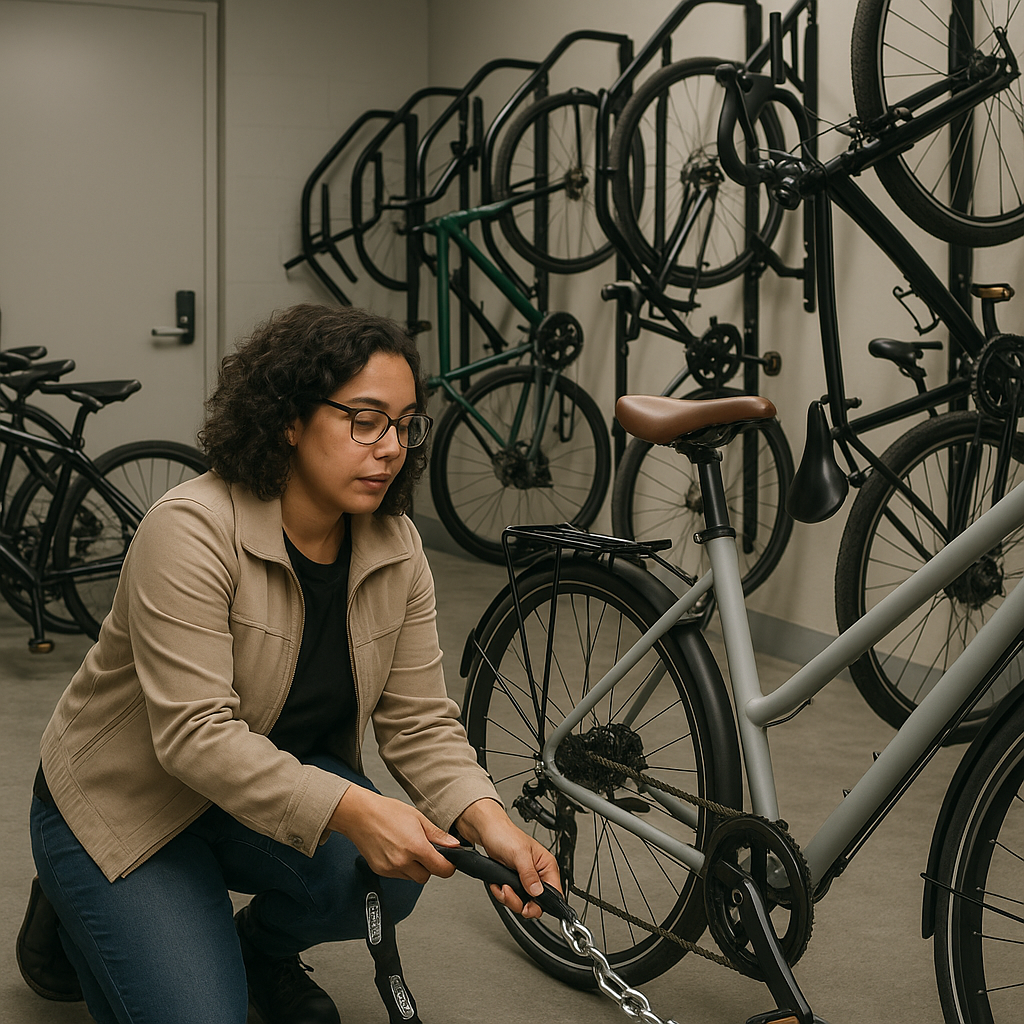
For apartment dwellers, lobby with management to create secure bike storage rooms with controlled access.
Advanced cyclists understand that comprehensive security includes both physical locks and modern tracking technology. The hidden power of AirTag mounts for cyclists provides an additional layer of protection, allowing riders to track their bikes if stolen while remaining invisible to potential thieves.
Advanced strategies to foil bike thieves
Beyond basic locking techniques, several advanced methods can significantly enhance your bike's security and make it a less appealing target for thieves.
The layered security approach
Professional security experts recommend using the double locking method—combining different lock types that require different tools to defeat. For example, pair a U-lock (resistant to leverage attacks) with a chain lock (flexible for securing multiple components). Supplement these with locking skewers for wheels and seat posts, replacing quick-release mechanisms that thieves can easily exploit.
Registration and documentation
Register your bike with national databases like Bike Index or 529 Garage, and keep detailed records of your bike serial number, photographs, and unique identifying features. Many police departments recover stolen bikes but cannot return them to owners due to insufficient documentation. Some municipalities offer free bike registry programs that can dramatically increase recovery rates.
Personalization and identification
Make your bike identifiable and less appealing to thieves through personalization. Consider unique paint jobs, frame wraps, or distinctive accessories that make your bike instantly recognizable and harder to sell. Some cyclists use UV-marking pens to write their contact information on hidden parts of the frame that only become visible under special lighting.
Leveraging technology
Modern anti-theft technology offers new ways to protect bicycles. GPS trackers designed specifically for bikes can be hidden within components, while Bluetooth trackers like AirTags provide an affordable tracking option when properly concealed. For those seeking hidden, tamper-resistant tracking solutions, products like this Airtag saddle mount provide stealthy tracking capabilities that thieves won't detect.
Psychological deterrents
Sometimes, creating the perception of difficulty can deter opportunistic thieves. Using brightly colored locks makes your security measures highly visible. Some cyclists intentionally make their bikes appear less valuable with electrical tape wraps or strategic "beater bike" aesthetics while maintaining high-quality components underneath. Others leave their bikes near more valuable, less-secured options, knowing thieves typically target the easiest opportunity.
Conclusion
Protecting your bike from theft isn't about implementing a single perfect solution—it's about creating multiple layers of security that collectively make stealing your bike too time-consuming, noisy, and risky for thieves. By avoiding common bike security mistakes, employing proper locking techniques, choosing secure locations, and adding advanced protection strategies, you significantly reduce your chances of becoming a theft victim.
Take time to evaluate your current security practices and identify areas for improvement. Consider upgrading outdated locks, adding secondary securing methods, or incorporating tracking technology into your security approach. With bicycle theft continuing to rise nationwide, staying informed about the latest security methods is essential. Explore the Best Anti-Theft Gear for Bikers in 2025 to discover how modern solutions can complement traditional security methods and provide comprehensive protection for your valuable ride.
Frequently asked questions
What is the best way to lock your bike to prevent theft?
Always lock your frame and at least one wheel to a sturdy, immovable object using a high-quality U-lock or chain, ideally supplementing with a secondary lock or component locks for wheels and seat.
Are cable locks safe for city bike parking?
No—cable locks can be cut in seconds with simple tools. Always use them as a secondary lock, never as your main form of security.
What should I avoid when locking my bike?
Avoid locking only the wheels or only the frame, using weak or movable objects, parking in poorly lit or isolated spots, and leaving accessories attached.
Does registering my bike really help if it's stolen?
Yes, registering your bike's serial number greatly increases the chances of recovery and helps authorities return your bike if found.
Are smart trackers (like AirTags) effective for bike security?
Smart trackers won't prevent theft but greatly aid in recovery. Hiding a tracker in a discreet mount makes it more likely you can locate a stolen bike.


